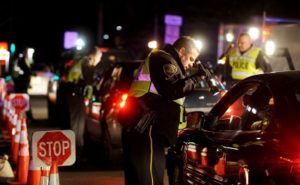Knowing Your Rights in New York | Part 1
In Robbins v. California Justice Powell famously commented that “The law of search and seizure with respect to automobiles is intolerably confusing.” If this area of the law is difficult for a renowned Supreme Court Justice to grasp, the Courts should realize how complicated the law is for the rest of us! Luckily, the law firm of Schalk, Ciaccio & Kahn, P.C. specializes in criminal defense and has successfully defended cases involving automobile searches.
When driving, it is always important to remember the basic rules of the road: always wear a seatbelt, signal before changing lanes, and drive at a reasonable speed. Everyone knows the simple rules, but were you aware that when proceeding to an intersection where the lights have malfunctioned and are blinking red or yellow, drivers must treat their light as a stop sign? The next time you encounter this malfunction, take notice of all the drivers who will proceed without stopping for their yellow light, leaving those with a flashing red light to enter the intersection at their own risk. The stress-free solution is to periodically review new regulations.
The first step to avoid getting pulled over is to never give an officer a reason to stop your vehicle. But, if you find yourself with red and blue flashing lights in your rearview mirror, stay calm. Stops, whether they are by vehicle or on foot, occur daily. They are a fact of life: consider that in 2013, New Yorkers were stopped by the police 191,558 times. When prompted, immediately slow down, but pull over to the side of the road when it is safe to do so. No one expects you to pull over on a stretch of highway where there is no shoulder (put on your hazard lights if necessary). There is no secret about what happens next. The officer will ask you to for your license and registration. Then, you may be asked to step out of the vehicle, blow into a breathalyzer, or answer questions. Remember to be polite and respectful to make the process easier. Being unnecessarily combative could lead to an obstruction of justice charge and arrest.
When it comes to answering questions, we are all constitutionally protected by our right to remain silent. An individual can remain silent and request a lawyer. But sometimes stops are simpler than that. How might requesting a lawyer sound if an officer stopped a vehicle for a broken taillight? Remember that anything that is illegally uncovered should be addressed in a suppression hearing, not on the street with a police officer. If you choose to speak, select your words wisely and remember that the police officer has a duty to investigate suspicious activity and enforce the law. Experts, lawyers, and law enforcement officers differ as to whether remaining silent is the best choice. For someone who has nothing to hide, complying with a few preliminary questions may result in a warning, rather than a ticket. For those who may be culpable of something, remaining silent may be the first step to a necessary criminal defense strategy. While being silent alone is insufficient grounds for an arrest, it may be a factor used by an officer to articulate reasonable suspicion.
What is reasonable suspicion? Like most answers in the field of law, the definition itself is unclear. The Supreme Court defined reasonable suspicion in United States v. Cortez, where it stated that the essence of reasonable suspicion is a “totality of the circumstances,” or the whole picture. The Court elaborated, “Based upon that whole picture, the detaining officers must have a particularized and objective basis for suspecting the particular person stopped of criminal activity.”
Legal standards are often confusing, so let’s clarify. Reasonable suspicion is required for a stop. Probable cause is necessary for an arrest. The Supreme Court was aware of the confusion and described the distinction in Alabama v. White. The Court stated that reasonable suspicion is a less demanding standard than probable cause. The information, or evidence, required to support reasonable suspicion can be less in terms of both quantity and quality. An officer needs less information for a stop and can rely upon information that is less reliable than required for probable cause. To illustrate, an unverified tip provided by an informant might be sufficient for an officer to articulate reasonable suspicion, but insufficient for probable cause.
The next article in this series explores specific automobile search inquiries. Always remember that the lawyers at Schalk, Ciaccio & Kahn, P.C. specialize in representing criminal defendants and can field defense questions relating to unlawful searches and seizures.



